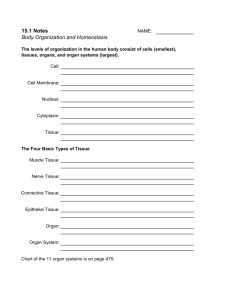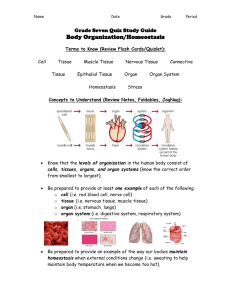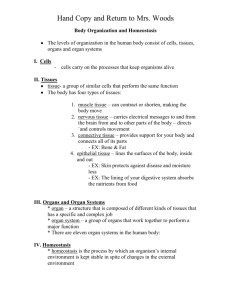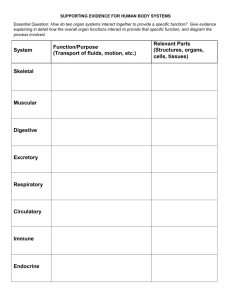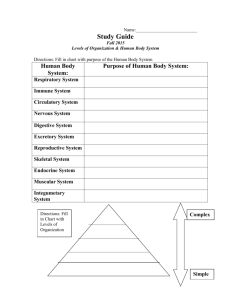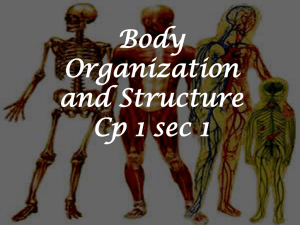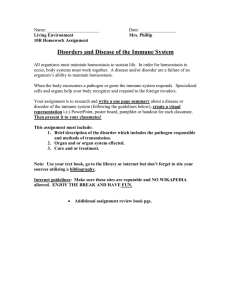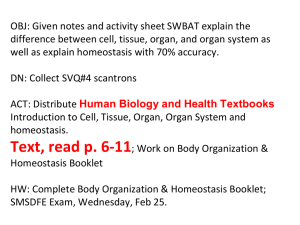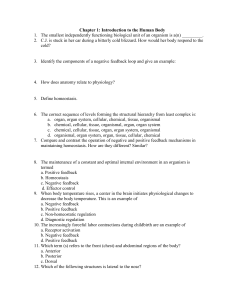What is Anatomy and Physiology
advertisement
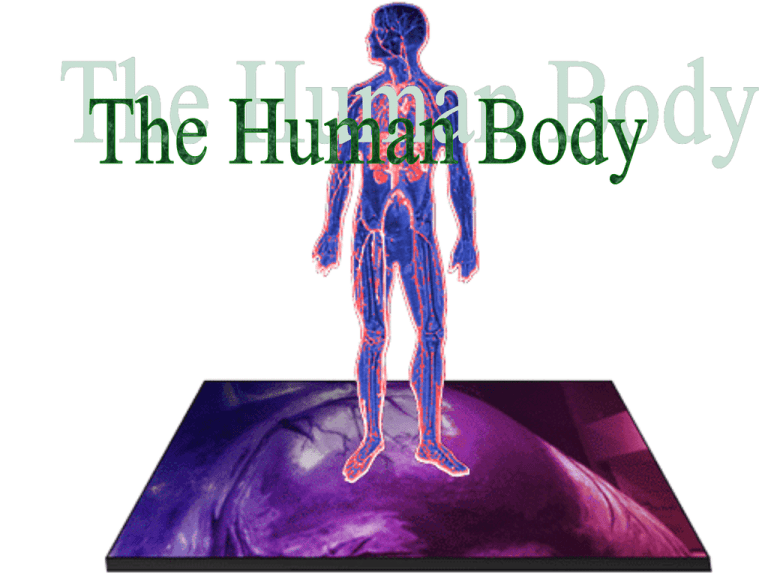
Orientation of the Human Body What is Anatomy? -Anatomy is the study of the structure and shape of the body, its parts and their relationship to one another. tomy = to cut ana = apart What is Physiology? -Physiology is the study of how the body and its parts work or function. physio = nature ology = the study of Levels of Organization Atoms organelle organ system cells organism tissue organ Organ Systems Integumentary - external coverings Skeletal - bones, cartilage, ligaments and joints Nervous - brain, spinal cord, nerves and sensory receptors Endocrine - controls body activities and hormones Cardiovascular - heart and blood vessels Lymphatic - lymphatic vessels, lymph nodes, spleen, tonsils Respiratory - nasal passages, pharynx, larynx, lungs, etc Digestive - oral cavity, esophagus, stomach, intestines, etc Urinary - kidneys, ureters, bladder, urethra Reproductive - scrotum, penis, ovary, eggs, ova, uterus etc Muscular - muscles Life Functions 1. Responsiveness 2. Secretion 3. Conductivity 4. Digestion 5. Metabolism 6. Excretion 7. Reproduction 8. Growth 9. Respiration 10. Absorption 11. Circulation Survival Needs -Nutrients -Oxygen -Water -A maintained body temp -Atmospheric Pressure -Hydrostatic pressure : pressure of fluids Major Body Cavities Abdominal Regions 4 Abdomen quadrants R & L halves (lateral) Superior & Inferior (top) (bottom) Anterior & Posterior (front) (back) Homeostasis -The body’s ability to maintain a relatively stable internal environment homeo = unchanging stasis = standing still Homeostatic Control Mechanisms -Most control is accomplished through the nervous and endocrine systems (p24 Fig1-14) Variable - factor or event being regulated 1. Stimulus detected by a sensor or receptor 2. Sensation is sent along afferent neurons to the … 3. Control center and it determines the appropriate response 4. Control center sends its response to an effector muscle or gland and returns variable back to homeostasis. Negative feedback – inhibitory, oppose a change *stabilizers, try to shut off or reduce initial stimulus Positive feedback – stimulatory, tend to amplify or accelerate a change Things to look at in your textbook and on your worksheets…... •Anatomical Positions -Standing erect with palms facing forward •Orientation and Directional Terms •Regional Terms •Body Planes and Sections •Body Types and Diseases •Clinical Applications (Box sets)
